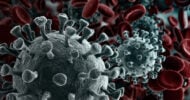Tedy Bruschi was discharged from the hospital yesterday. This is wonderful and encouraging news, as he did not need acute rehabiliation and was able to return home. The focus now turns on what can cause a stroke in someone in their early 30s.
90 percent of strokes occur after the age of 55. It has been mentioned previously that some sort of bleeding led to his stroke – things like blood vessel malformations (written previously) are still possible. The Boston Globe today focuses on some hypotheses as to what happened, including the more common thrombotic and embolic causes. It also briefly touches on malformations:
If it’s a rupture and the patient is young, it’s typically blamed on a malformation in the vessel that results from a congenital quirk. Repairing it means placing a tiny clip at the site of the ballooning vessel so that the damaged part is put out of the way and then, possibly, packing the ballooned part with tiny coils so that it cannot fill with blood.
Another consideration would be a carotid artery dissection. Specifically, it is tearing of the carotid artery, which supplies blood to the brain. Unlike the other causes that have been mentioned, this cause typically presents in those under 40 years old. Trauma of the neck and neck manipulations can predispose one to this, leading to symptoms such as headache, vision changes, and muscle weakness. This was also suspected in the Globe article:
In those cases, an otherwise robust athlete might take a blow to the neck or the head with such ferocity that it bruises or kinks a major vessel such as the carotid artery, which snakes up the neck and into the brain. Blood begins clotting inside the vessel, growing so large that it eventually punctures the inner wall of the vessel and pops into the bloodstream.
“It’s just like an interstate that runs through downtown Boston,” Day explained. “The further you get away from downtown, the less lanes you need as people turn off to go home.”
In the human body, those lanes — blood vessels — narrow as the clot travels deeper in the brain, until it can go no farther.
The signs that something is seriously wrong vary, depending on where the clot stalls.
Treatment consists of rehabilitation and anticoagulation therapy (i.e. blood thinners), which has been shown to improve outcomes. eMedicine quotes the 10-year recurrence rate of 11% (about 1% per year).
I’ll keep a close eye on this story and continued best wishes to Tedy for a speedy recovery.













![Working patients and health care [PODCAST]](https://www.kevinmd.com/wp-content/uploads/Working-patients-and-health-care-190x100.jpg)
![Supporting medical resident families [PODCAST]](https://www.kevinmd.com/wp-content/uploads/Supporting-medical-resident-families-190x100.jpg)




![A tribute to primary care [PODCAST]](https://www.kevinmd.com/wp-content/uploads/A-tribute-to-primary-care-190x100.jpg)
